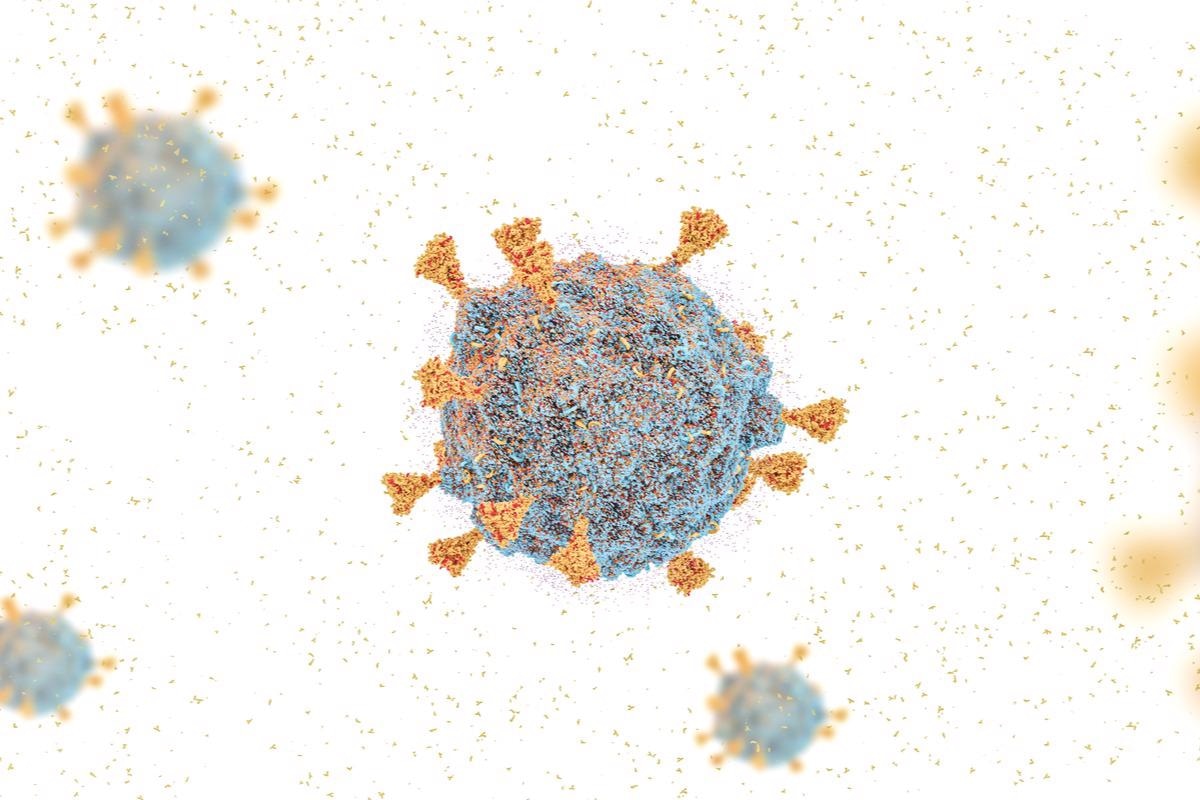Early data posted to the preprint server bioRxiv* suggests another Omicron lineage, called BA.2, is more contagious than BA.1 — the Omicron lineage that sparked the winter surge of coronavirus disease 2019 (COVID-19) cases in January 2022.
The current study identified the characteristics of the BA.2 variant and found that compared to the original Omicron strain, BA.2 is more immune resistant and shows greater cell fusion than BA.1.
 Study: Virological characteristics of SARS-CoV-2 BA.2 variant. Image Credit: CI Photos/Shutterstock
Study: Virological characteristics of SARS-CoV-2 BA.2 variant. Image Credit: CI Photos/Shutterstock
As of February 2022, the Omicron variant has mutated into three lineages: BA.1, BA.2, and BA.3. A sublineage of BA.1 with an R346K substitution in the spike protein is classified as BA.1.1.

 This news article was a review of a preliminary scientific report that had not undergone peer-review at the time of publication. Since its initial publication, the scientific report has now been peer reviewed and accepted for publication in a Scientific Journal. Links to the preliminary and peer-reviewed reports are available in the Sources section at the bottom of this article. View Sources
This news article was a review of a preliminary scientific report that had not undergone peer-review at the time of publication. Since its initial publication, the scientific report has now been peer reviewed and accepted for publication in a Scientific Journal. Links to the preliminary and peer-reviewed reports are available in the Sources section at the bottom of this article. View Sources
Evolutionary descent of Omicron lineages
The severe acute respiratory syndrome coronavirus 2 (SARS-CoV-2) BA.1 emerged first followed by BA.2 and BA.3. Similar to BA.1 the earlier strains of BA.2, BA.3 and BA1.1 were detected in the Gauteng Province in South Africa suggesting the diversification of Omicron occurred there.
While BA.1 spread across the world at a faster rate than BA.2, the BA.2 lineage became more prevalent than BA.1 since January 2022 in multiple countries, including the Phillippines, India, Denmark, Singapore, Austria, and South Africa.
The study researchers created a model to analyze the epidemic dynamics of different SARS-CoV-2 lineages and estimate the number of COVID-19 cases for each country by each viral lineage. The frequency of BA.2 lineage was 1.40-fold higher than BA.1, suggesting cases caused by BA.2 will expand and spread more rapidly around the world than BA.1.
BA.2 shows resistance to monoclonal antibodies
The genetic sequence in the spike protein of the BA.2 lineage differs considerably from the BA.1 lineage suggesting it may confer greater immune resistance against antibodies.
To study this, the researchers performed neutralization assays with pseudoviruses and neutralizing antibodies that would be produced after vaccination. Results showed that BA.2 was similar to BA.1 in resistant vaccine-induced antibodies. BA.1 has shown to be highly resistant against mRNA vaccines and the AstraZeneca vaccine.
The Omicron BA.2 lineage was also completely resistant to two monoclonal antibodies known as Casirivimab and Imdevimab. Additionally, there was a 35-fold greater resistance to a therapeutic antibody, called Sotrovimab, compared to the B.1.1 virus containing D614G. Both BA.1 and BA.2 were highly resistant to convalescent serum samples containing antibodies after recovery from the original SARS-CoV-2 virus, the Alpha virus, and the Delta virus.
These data suggest that, similar to BA.1, BA.2 is highly resistant to the antisera induced by vaccination and infection with other SARS-CoV-2 variants as well as three antiviral therapeutic antibodies,” wrote the research team.
The researchers also studied convalescent samples infected with BA.1. Thirteen convalescent samples came from fully vaccinated individuals, 1 convalescent sample came from a person with one vaccine dose, and 3 convalescent samples came from unvaccinated individuals. While the results were not statistically significant, BA.2 appeared 1.4-fold more resistant to BA.1-infected sera.
Another observation was that convalescent samples from fully vaccinated individuals showed stronger antiviral effects against all variants compared to the 1-dose or unvaccinated serum samples.
Further investigation showed that BA.1-induced humoral immunity is less effective against BA.2. Using convalescent serum samples from infected hamsters 16 days after infection, the team found both BA.1 and BA.2 showed high resistance against B.1.1 and Delta-infected serum samples. BA.2 showed a 2.9-fold resistance against BA.1-infected convalescent hamster sera compared to BA.1.
Virological characteristics of BA.2 lineage
BA.2 was more contagious than BA.1 when studying the replication process in human nasal epithelial cells. BA.2 also showed significantly more cell fusion than BA.1. There were 1.52-fold larger syncytia seen in BA.2 than BA.1.
The greater fusogenic properties of BA.2 were hypothesized to come from more efficient cleaving of the spike protein than BA.1. However, a Western blot analysis showed the BA.2 spike protein was cleaved less than BA.1’s spike protein, indicating fusogenicity occurred independently of cleavage.
Instead, BA.2 may be more fusogenic and replicative than BA.1 in a TMPRSS2-dependent manner. Cell-based fusion assays revealed the fusogenicity of the BA.2.spike protein and the B.1.1 spike protein was similar in cells containing TMPRSS2 compared to those without it.

 This news article was a review of a preliminary scientific report that had not undergone peer-review at the time of publication. Since its initial publication, the scientific report has now been peer reviewed and accepted for publication in a Scientific Journal. Links to the preliminary and peer-reviewed reports are available in the Sources section at the bottom of this article. View Sources
This news article was a review of a preliminary scientific report that had not undergone peer-review at the time of publication. Since its initial publication, the scientific report has now been peer reviewed and accepted for publication in a Scientific Journal. Links to the preliminary and peer-reviewed reports are available in the Sources section at the bottom of this article. View Sources
Article Revisions
- May 12 2023 - The preprint preliminary research paper that this article was based upon was accepted for publication in a peer-reviewed Scientific Journal. This article was edited accordingly to include a link to the final peer-reviewed paper, now shown in the sources section.